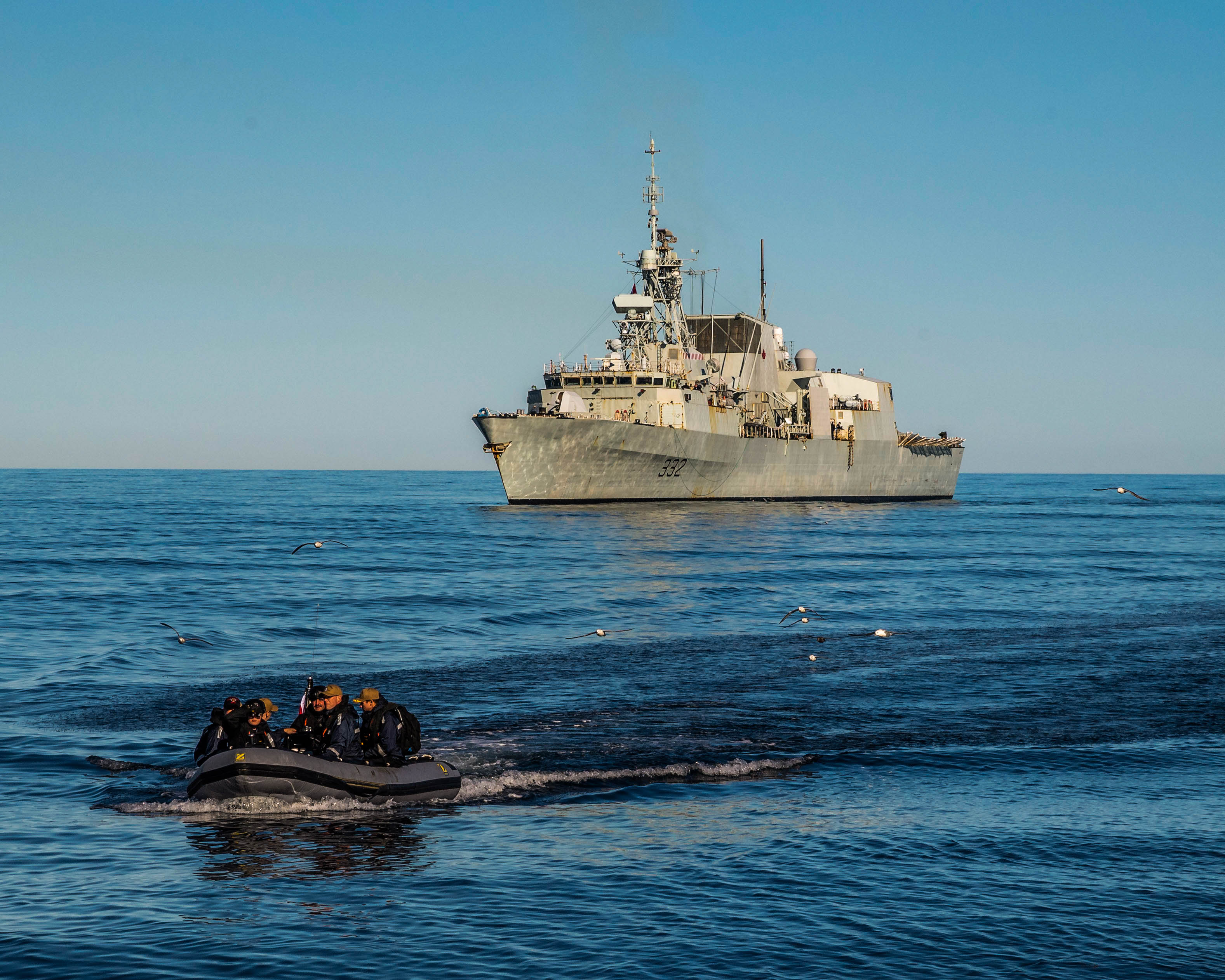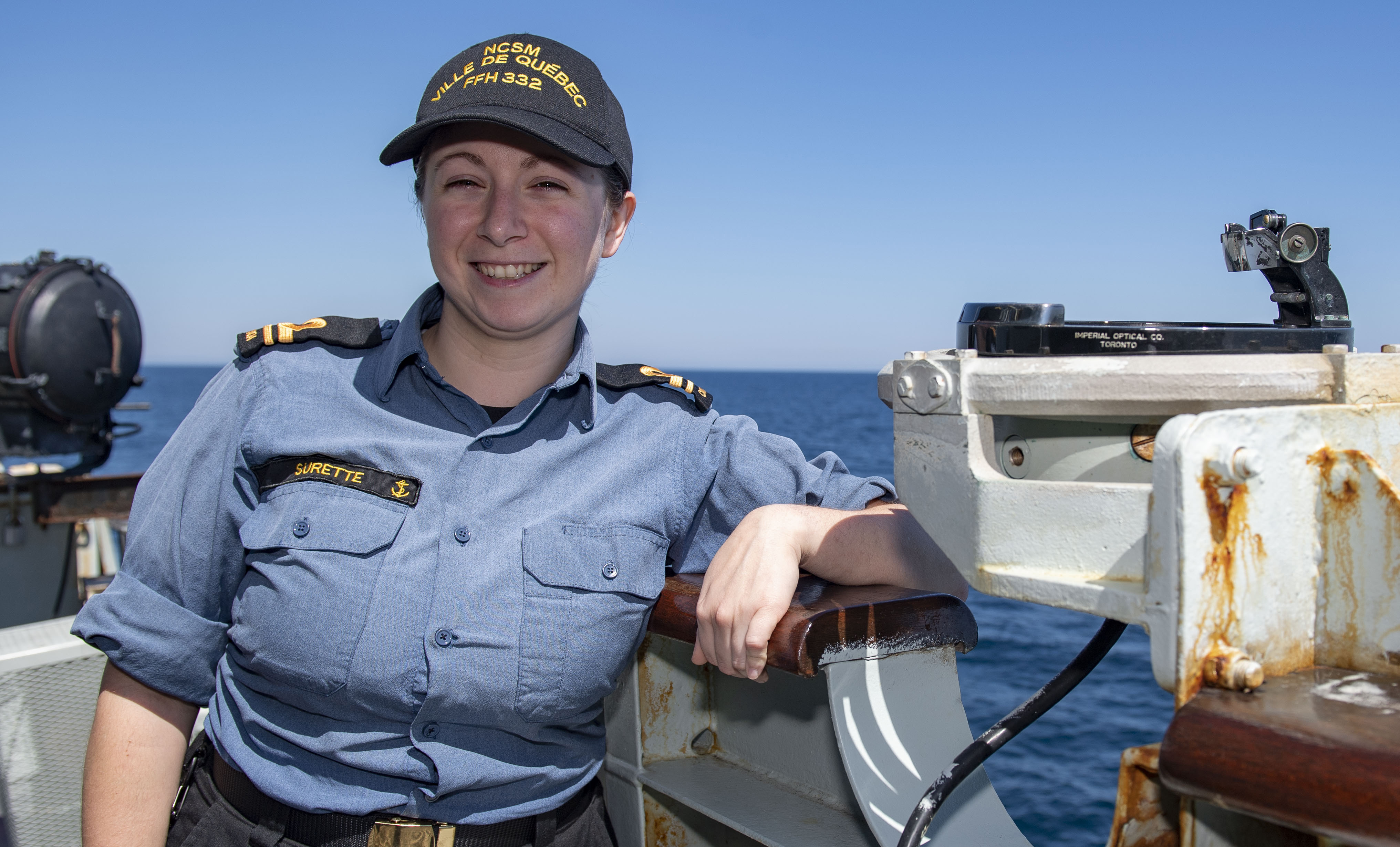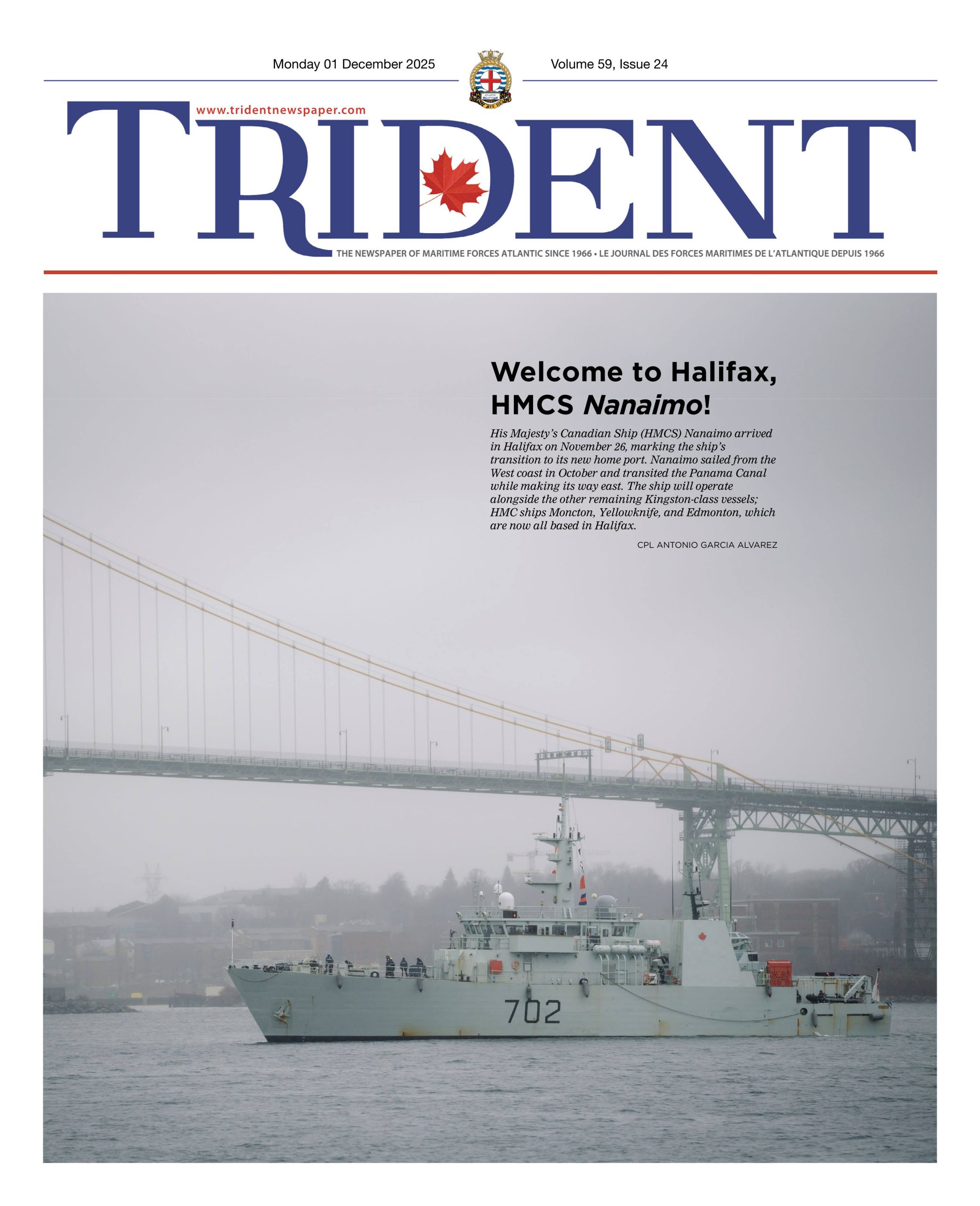
CPL DAVID VELDMAN, CAF PHOTO
Op NANOOK: From the perspective of a Bridge Watchkeeper under training
By SLt Jillian Surette,
HMCS Ville De Québec

SUBMITTED
In late January 2020, I set sail for Africa with HMCS Shawinigan in consort with HMCS Glace Bay for Op PROJECTION 2020. During this sail I learned seamanship and how to run the bridge of a minor war vessel, earning my bridge watchkeeping ticket. The deployment was unfortunately cut short due to the COVID-19 pandemic which was starting to grow significantly worldwide, and we returned mid-April 2020.
After a few months working from home, I was posted to the frigate HMCS Ville De Québec, taking the next step in my career as a Naval Warfare Officer (NWO). I joined the ship for Mission State Readiness Training (MSRT) in preparation for Op NANOOK-TUUGAALIK, which became a crash course of everything to do with life on major warship, starting with where do I sleep, eat, or do laundry, and how do I even get there? And that’s not even considering what happens when there’s an emergency or a drill! I was finally able to see all the evolutions I learned about while I was training in Esquimalt first hand, and learn even more than when I was on course. Thankfully, everything I had forgotten rushed back into my memory in a hurry, on top of all the new things to which I was being exposed.
For Op NANOOK-TUUGAALIK, Ville De Québec took position as the Flag Ship, embarking Capt(N) Martin Fluet and his staff from Canadian Fleet Atlantic. We set sail with our consorts, Canadian ships HMCS Glace Bay, MV Asterix, USS Thomas Hudner, United States Coast Guard Cutter Tahoma, His Danish Majesty’s Ship Triton, and French Ship Fulmar. The purpose of this sail was to show NATO military presence in the Arctic and to work with our allied counterparts to conduct exercises together as we proceeded North, to the Arctic Circle and to Nuuk, Greenland.
As this was such a big operation and I was new to this class of ship, I was very hesitant at first on the bridge when it came to running the watch. As an untrained bridge watchkeeper, most of my time on the bridge is spent as an understudy to the ticketed watchkeepers, maintaining administration, finding opportunities to drive the watch, and working to refine my reports to the ship’s captain.
During this operation, we were involved in multi-ship, anti-warfare operations, conducting exercises in anti-submarine and anti-surface warfare, using weapons fitted on ships, and towed acoustic systems to track underwater threats, as well as helicopter evolutions. This was also my first time being involved in major weapons firings in systems, which are able to be remotely controlled from an operations room team. The ships took turns firing at the remotely controlled Hammerhead Target using small arms, such as the 57mm gun, in order to sink the target, in accordance with environmental safety precautions.
We conducted multiple helicopter serials with USS Thomas Hudner’s Sea Hawk, Cutlass. With no Air Detachment onboard, this was a great opportunity for our Ship Without Air Detachment (SWOAD) team to conduct training. Additionally, this was my first time being involved in the recovery and launching of a helicopter on the deck of a ship, requiring a steady ship and a watchful eye on the safety of the whole evolution. To me, this was the coolest and most nerve-wracking of all the operations we conducted. Being under the helicopter in one of the control stations as it hovered over our flight deck really gave me an appreciation of why it’s so important to maintain safety during the evolution.
I am extremely grateful for my experience on this operation, and for being posted to Ville De Québec when I did. It is a great crew, made up of many people with varying levels of experience. It was an incredible experience to be a part of a multinational task group and work alongside allied nations. As the operation drew to an end, my only regret was not being able to be in more than one place at a time to experience all of the serials!






